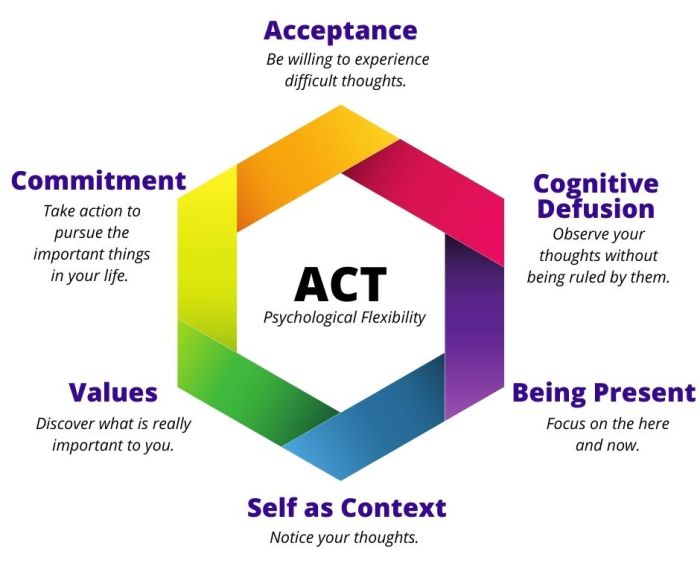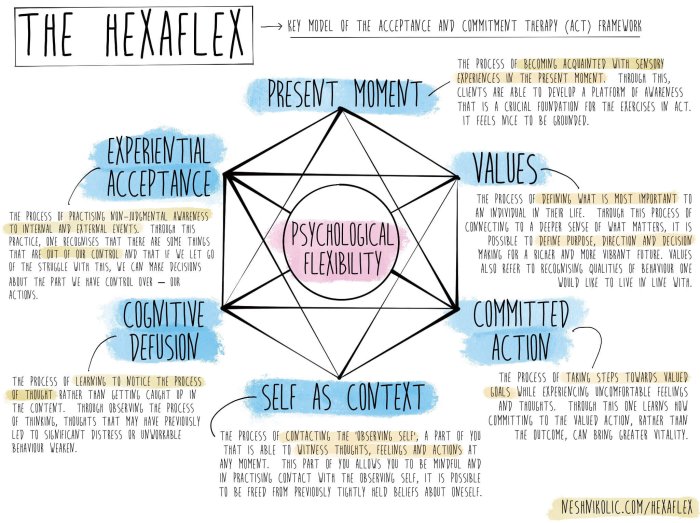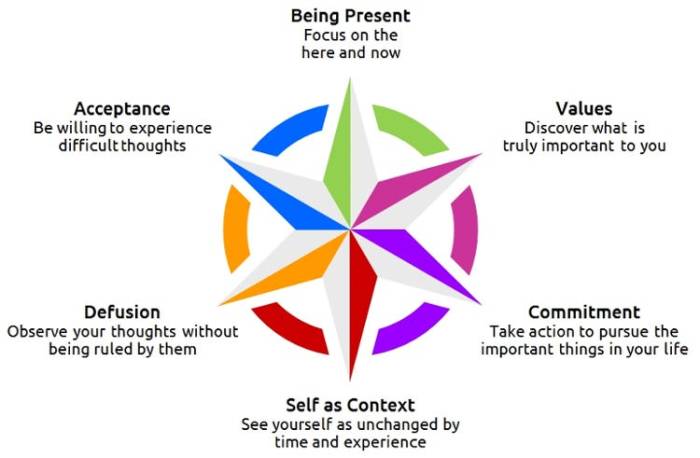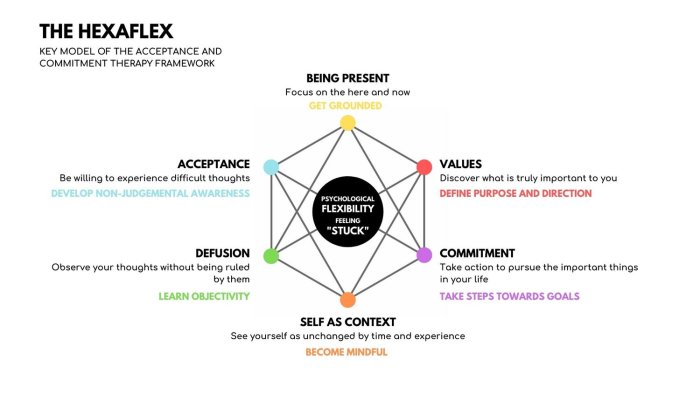The Acceptance and Commitment Therapy Hexaflex, a groundbreaking model in psychotherapy, provides a comprehensive framework for understanding and addressing psychological suffering. This model, rooted in the principles of Acceptance and Commitment Therapy (ACT), offers a transformative approach to fostering psychological flexibility and well-being.
The ACT Hexaflex comprises six interconnected processes that guide therapists and clients in cultivating psychological acceptance, mindfulness, and values-driven action. These processes work synergistically to promote greater psychological resilience, adaptability, and life satisfaction.
1. Define Acceptance and Commitment Therapy (ACT)

Acceptance and Commitment Therapy (ACT) is a form of psychotherapy that focuses on helping people accept their thoughts and feelings, while also committing to actions that are in line with their values.
ACT is based on the idea that people often struggle with psychological distress because they try to fight or control their thoughts and feelings. However, this only leads to more suffering. Instead, ACT teaches people to accept their thoughts and feelings as they are, and to focus on living a meaningful life.
2. The ACT Hexaflex Model
The ACT Hexaflex Model is a framework that describes the six core processes of ACT:
- Acceptance
- Cognitive Defusion
- Being Present
- Self as Context
- Values
- Committed Action
These six processes work together to help people create a more fulfilling and meaningful life.
3. Using the ACT Hexaflex in Therapy
The ACT Hexaflex can be used in clinical practice to help clients with a variety of mental health conditions, including anxiety, depression, and addiction.
Therapists can use the model to help clients identify their values, develop coping mechanisms, and take action towards their goals.
4. Research on the ACT Hexaflex: Acceptance And Commitment Therapy Hexaflex

There is a growing body of research that supports the effectiveness of the ACT Hexaflex. Studies have shown that ACT can help people reduce psychological distress, improve mental health, and increase life satisfaction.
However, it is important to note that ACT is not a cure-all. It is a complex model that requires time and effort to implement. However, for people who are willing to commit to the process, ACT can be a powerful tool for change.
5. Criticisms of the ACT Hexaflex

The ACT Hexaflex has been criticized for being too vague and for not providing enough guidance for therapists.
However, proponents of the model argue that its flexibility is one of its strengths. They say that the model allows therapists to tailor their approach to the individual needs of their clients.
6. Future Directions for the ACT Hexaflex

The ACT Hexaflex is a relatively new model, and there is still much that we do not know about it.
Future research will likely focus on investigating the effectiveness of the model for different populations and for different mental health conditions.
Question Bank
What is the core principle of ACT?
ACT is based on the idea that psychological suffering stems from attempts to control or avoid unpleasant thoughts, feelings, or experiences.
How does the ACT Hexaflex promote psychological flexibility?
The ACT Hexaflex helps individuals develop the ability to accept their thoughts and feelings while taking committed action towards their values.
What are the benefits of using the ACT Hexaflex in therapy?
The ACT Hexaflex has been shown to be effective in reducing psychological distress, improving mental health outcomes, and enhancing overall well-being.